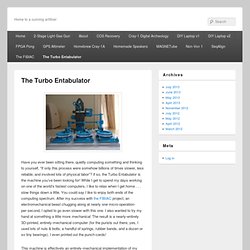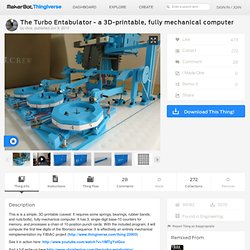

‘Cloaking’ device uses ordinary lenses to hide objects across range of angles : NewsCenter. Doctoral student Joseph Choi is pictured with a a multidirectional `perfect paraxial’ cloak using 4 lenses.

Inspired perhaps by Harry Potter’s invisibility cloak, scientists have recently developed several ways—some simple and some involving new technologies—to hide objects from view. The latest effort, developed at the University of Rochester, not only overcomes some of the limitations of previous devices, but it uses inexpensive, readily available materials in a novel configuration. “There’ve been many high tech approaches to cloaking and the basic idea behind these is to take light and have it pass around something as if it isn’t there, often using high-tech or exotic materials,” said John Howell, a professor of physics at the University of Rochester. Forgoing the specialized components, Howell and graduate student Joseph Choi developed a combination of four standard lenses that keeps the object hidden as the viewer moves up to several degrees away from the optimal viewing position.
Behance. Capacitor Charger and Test Jig: Low Power Input, High Voltage Ceramic. Loading...

Please wait... Categories Our Newsletter Capacitor Charger and Test Jig: Low Power Input, High Voltage Ceramic Share on facebookShare on emailShare on twitterShare on linkedin Loading zoom Price: Shipping: Great Surplus Deals on Accessories @ WeirdStuff Warehouse. ‘Cloaking’ device uses ordinary lenses to hide objects across range of angles : NewsCenter. Free 3D Model Search Engine. Make your own integrated circuits at home.
Make your own vacuum tubes? 3D Printing Store. Burnt Transistors. DIY Oscilloscopes. Servo Stock, The Future Of 3D Printers. Researchers Plug Google’s Project Tango Into A Drone To Let It Fly Itself Around A Room. Remember Project Tango?

Google’s crazy project to add 3D environment mapping abilities to a smartphone? Yeah, someone just went ahead and took the next logical step: they plugged it into a drone. Researchers at the University of Pennsylvania managed to get their hands on a prototype Tango device, and quickly strapped it into their self-built quadcopter. This is probably a good place for a Skynet joke, but all I can see are Manhacks. Don’t forget your crowbar! The video above can do with a bit of explanation, so here’s what you’re seeing: For the first minute or so, the drone is using data from the Project Tango unit (and only that data — no external sensors) to try to maintain its position in space. The important part here: that laptop you see in the background isn’t telling the drone how to get from Point A to Point B. Cool Idea: Using Tiny 3-D Printed Parts to Hack Other Products.
The Unreasonable Effectiveness of Checklists. Summary: You should be using more checklists.

They're an awesome and often overlooked tool, but how effective are they? A brief review of some of the evidence. Dr. Peter Provonost had a problem. 'Most ingenious' marble run science project winner! What I made days ago Mission: Construct a marble run with your child and use it as an opportunity to teach them about science and technology.

Real mission: Construct a marble run with (or without) your child. Beat the other kids. Beat the other kids’ parents. Only kidding… (not really). This year we went for a space themed marble run science project – with ‘flying comet’ and ‘rocket launch’ effects (watch the video above with the sound on)!
The Microfactory: A machine shop in a box by Mebotics LLC. Makers making for makers: The Microfactory project began one year ago when four friends, longtime members of an independent maker space in Somerville, Massachusetts called Artisans Asylum, came together to create a better prototyping and machining tool....one that was easy to use, self-contained, and capable of a truly impressive list of tasks.

They independently financed the development and testing of five full versions of the Microfactory, resulting in the exceptional product featured here. The Microfactory was entirely conceived, designed and built by people who have spent their lives around machines, who wanted to make something truly revolutionary and highly usable for makers everywhere. Bioengineer develops a 50-cent paper microscope. UPDATE: A second blog entry, including a link to Prakash’s TED talk on this topic, can be found here.

And this entry discusses Prakash’s plans to give away 10,000 build-your-own paper microscope kits to citizen scientists with the most inspiring ideas for things to do with this new invention. When Manu Prakash, PhD, wants to impress lab visitors with the durability of his Origami-based paper microscope, he throws it off a three-story balcony, stomps on it with his foot and dunks it into a water-filled beaker. Watch: Scientists make super-strong artificial muscle from fishing line. By taking sewing thread and fishing wire and giving it a twist, scientists have created artificial muscle that’s 100 times stronger than human or animal sinew.

The invention, described in the journal Science, could be useful for prosthetic limbs, humanoid robots, implanted medical devices and even wearable clothing. This wouldn’t be the first artificial muscle on the market: there are carbon nanotube yarns and metal wires, but they’re often expensive or store relatively low amounts of energy compared to their competitors, scientists said. These new high-strength polymer fibers, made out of cheap, everyday materials that cost about $5 per kilogram, draw their strength from their geometry. In experiments led out of the University of Texas at Dallas in Richardson, scientists took these thin fibers that were just a few hundred micrometers long and twisted them until they began to coil.
Jacques Maurel - Teacher in Machine Design.
About sugru. » The Turbo Entabulator. Have you ever been sitting there, quietly computing something and thinking to yourself, “If only this process were somehow billions of times slower, less reliable, and involved lots of physical labor”?

If so, the Turbo Entabulator is the machine you’ve been looking for! While I get to spend my days working on one of the world’s fastest computers, I like to relax when I get home . . . slow things down a little. You could say I like to enjoy both ends of the computing spectrum. The Turbo Entabulator - a 3D-printable, fully mechanical computer by chris. This is more of a 3D-printable, mechanical computing construction kit, as replicating mine exactly might be difficult, as well as unnecessary.

I laser-cut a copy of 'pegboard.dxf' to give me a useful 12"x12" work area with holes cut every 0.5" to mount everything. Mounting things is left as an exercise for the reader (feel free to craft your own solution).